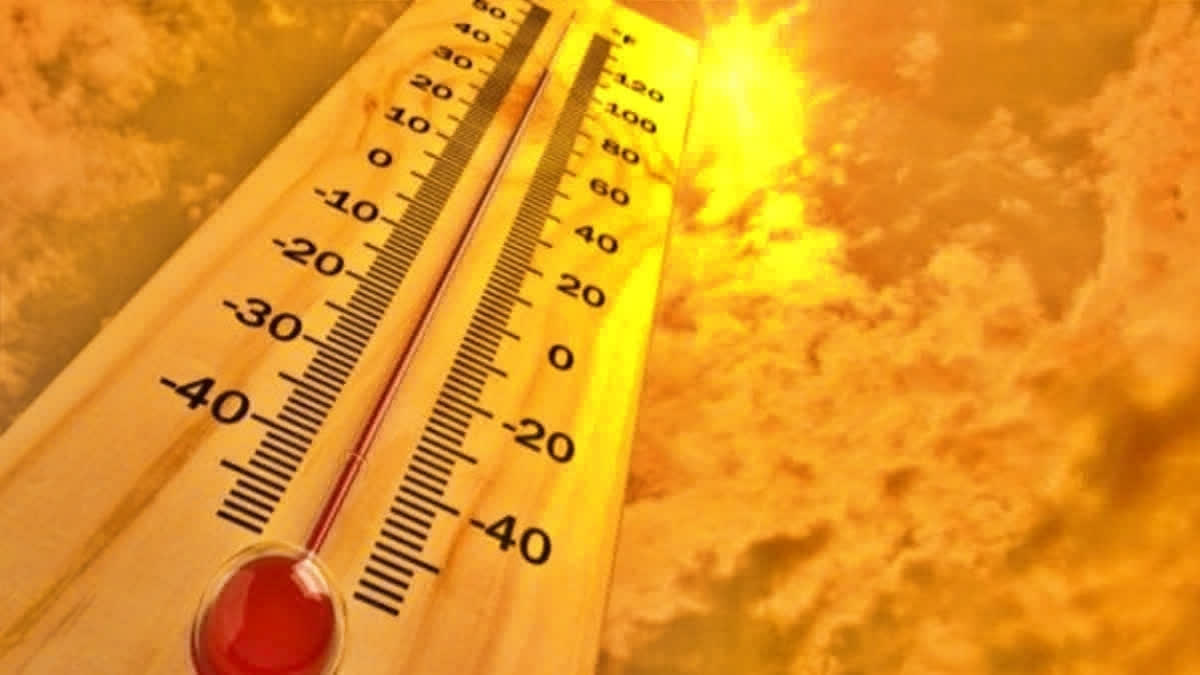Lifestyle
Climate change could expose India and the Indus Valley to uninhabitable heat: PNAS study
Published
6 months agoon

A new study published in the journal Proceedings of the National Academy of Sciences (PNAS) warns that climate change could expose up to 2.2 billion people in India’s Indus Valley and Pakistan to many hours of heat that surpass human tolerance by the end of the century. If global temperatures rise by 1°Celsius or more, billions of people worldwide will be unable to naturally cool themselves.
The study’s authors, led by climate scientist Camilo Mora of the University of Hawaii at Manoa, used a climate model to project future heat stress levels around the world. They found that even if global warming is limited to 1.5 °Celsius, billions of people will be exposed to extreme heat events that are beyond the human body’s ability to cope.
However, the study also found that if global warming is limited to 1.5 °Celsius, the number of people exposed to uninhabitable heat will be significantly lower than if warming reaches 2 °Celsius or more. In fact, the study estimates that limiting warming to 1.5 °Celsius could save up to 1.2 billion people from being exposed to extreme heat.
Humans can only withstand certain combinations of heat and humidity before their bodies begin to experience heat-related health problems, such as heat stroke or heart attack. As climate change pushes temperatures higher around the world, billions of people could be pushed beyond these limits, they noted.
“To understand how complex, real-world problems like climate change will affect human health, you need expertise both about the planet and the human body,” said W. Larry Kenney, professor at Penn State and co-author of the new study.
The ambient wet-bulb temperature limit for young, healthy people is about 31 °C, according to work published last year by Penn State researchers. However, in addition to temperature and humidity, the specific threshold for any individual at a specific moment also depends on their exertion level and other environmental factors, including wind speed and solar radiation.
If the global temperature rises by 2 °C
The Indus Valley is one of the most vulnerable regions in the world to climate change. The region is already hot and humid, and climate change is expected to make it even hotter and more humid in the future. This could make it difficult or impossible for people to live and work in the region.
The study’s findings have important implications for policymakers and businesses in India and Pakistan. Governments need to develop adaptation plans to help people cope with the impacts of climate change, such as building heat-resistant housing and infrastructure, and providing access to cooling centers. Businesses also need to adapt to climate change, such as by developing new heat-tolerant crops and by changing their work schedules to avoid the hottest times of day.
In addition to the Indus Valley, other regions that are particularly vulnerable to climate change include eastern China, sub-Saharan Africa, and the Middle East. These regions are all hot and humid, and they are all expected to experience significant warming in the future.
The researchers used temperature rises ranging from 1.5 °Celsius to 4 °Celsius, which represents the worst-case scenario, to identify the places where warming would exceed human limits.
According to their findings, if global temperatures rise by 2 °Celsius, the 2.2 billion people who live in the Indus River Valley in Pakistan and India, as well as the one billion people who live in eastern China, and the 800 million people who live in sub-Saharan Africa, will experience yearly heat waves that are too intense for humans to tolerate. Since these areas are mainly found in low- to middle-income countries, many impacted people lack access to air conditioning and other practical cooling measures.
The PNAS study is a stark reminder of the dangers of climate change. If we do not take action to reduce greenhouse gas emissions, billions of people will be exposed to uninhabitable heat, with potentially devastating consequences for human health and well-being.
What did the study reveal
- The study’s findings are particularly concerning because they suggest that even if global warming is limited to 1.5 °Celsius, billions of people will still be exposed to extreme heat. This highlights the importance of taking action to reduce greenhouse gas emissions as much as possible.
- The findings also have important implications for policymakers and businesses in India and Pakistan. Governments need to develop adaptation plans to help people cope with the impacts of climate change, such as building heat-resistant housing and infrastructure, and providing access to cooling centers. Businesses also need to adapt to climate change, such as by developing new heat-tolerant crops and by changing their work schedules to avoid the hottest times of day.
Impact that climate change could have on the Indus Valley
- Reduced agricultural yields: Climate change could lead to more frequent and severe droughts and floods in the Indus Valley, which would damage crops and reduce agricultural yields. This could lead to food shortages and malnutrition in the region.
- Increased heat stress: Climate change is expected to make the Indus Valley even hotter and more humid in the future. This could make it difficult or impossible for people to live and work in the region, particularly during the summer months.
- Increased risk of diseases: Heat stress can increase the risk of a variety of diseases, including heat stroke, heart disease, and kidney disease. Climate change is therefore expected to increase the burden of disease in the Indus Valley.
- Mass migration: The impacts of climate change, such as reduced agricultural yields and increased heat stress, could lead to mass migration from the Indus Valley. This could have a destabilizing impact on the region and could lead to conflict.
At current levels of heating, the researchers said, the US will experience more heatwaves, but these heat waves are not predicted to surpass human limits as often as in other regions of the world. Still, the researchers cautioned that these types of models often do not account for the worst, most unusual weather events.
“Models like these are good at predicting trends, but they do not predict specific events like the 2021 heatwave in Oregon that killed more than 700 people or London reaching 40 °C last summer,” said lead author Daniel Vecellio, a bioclimatologist who completed a postdoctoral fellowship at Penn State.
“And remember, heat levels then were all below the limits of human tolerance that we identified. So, even though the United States will escape some of the worst direct effects of this warming, we will see deadly and unbearable heat more often. And — if temperatures continue to rise — we will live in a world where crops are failing and millions or billions of people are trying to migrate because their native regions are uninhabitable,” Vecellio added.
Overall, the PNAS study is a sobering reminder of the dangers of climate change. It is important to take action to reduce greenhouse gas emissions and to adapt to the impacts of climate change, to protect people from the devastating consequences of extreme heat.
You may like
-


Indian Government’s Crackdown on Social Media: A Threat to Free Speech
-


The Simpsons did it again! This time foreseeing Apple’s latest technological innovation – The Apple Vision Pro
-


Dilip Venkatraman was promoted to SVP and business head for Media and Entertainment at Tech Mahindra
-


Swati Bhattacharya steps down as FCB India CCO
-


Lodha Ventures onboards Mahesh Shah as President of Corporate Communications
-


Nippon India Mutual Fund names Kaiyomurz Daver as Chief Marketing Officer


